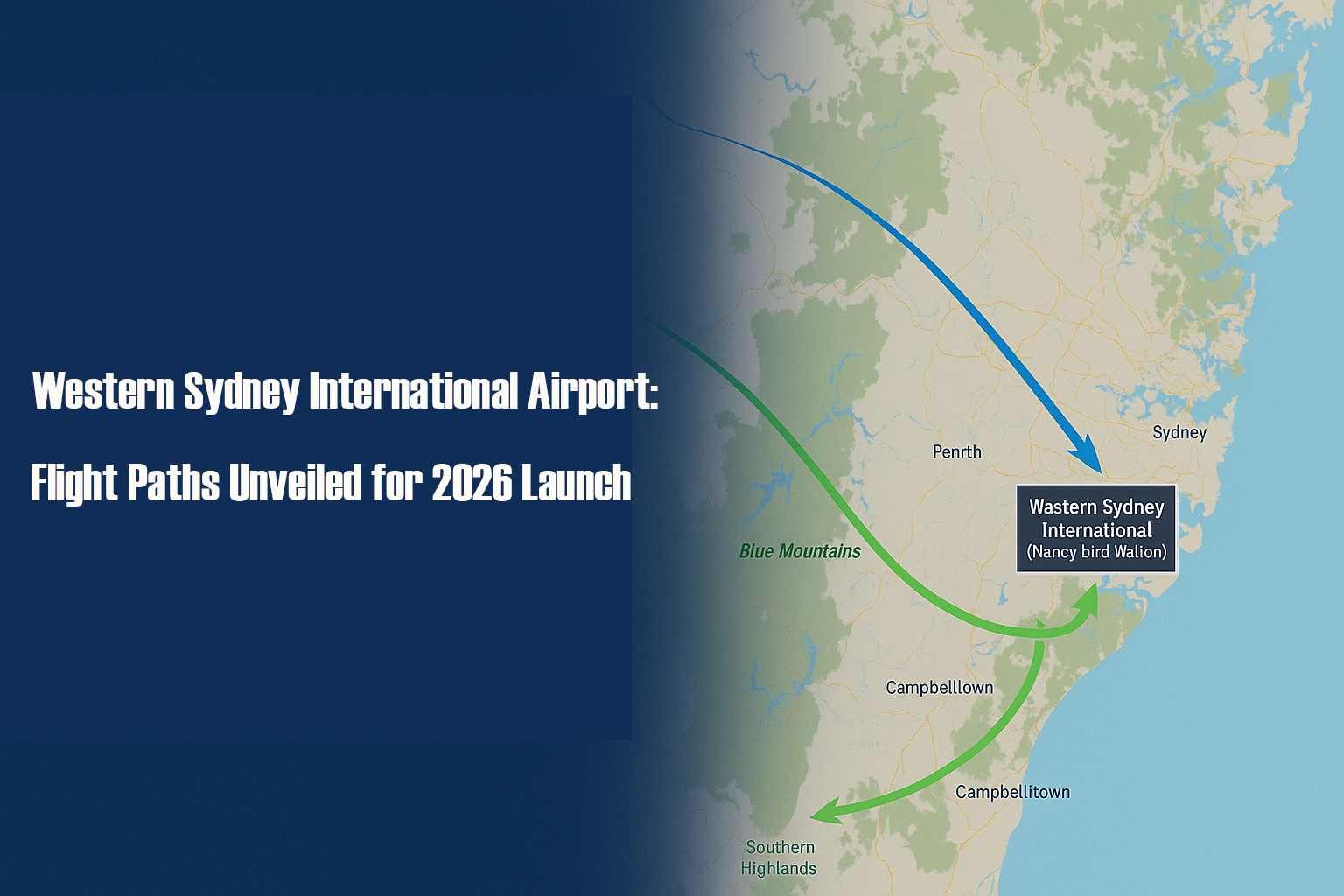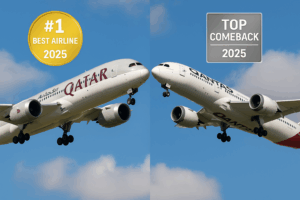Western Sydney International (Nancy-Bird Walton) Airport is set to soar with its 2026 opening, and the newly revealed flight paths are generating excitement for what’s to come. Located in Badgerys Creek, 41 kilometers west of Sydney’s CBD, this $3.5 billion project will reshape travel in Australia. Here’s a look at the new flight paths, their impact, and why this airport is a big deal for travelers and locals alike.
A Game-Changer for Sydney Travel
Western Sydney International (WSI) is designed to handle 10 million passengers annually from day one, with plans to scale up to 80 million, putting it on par with global giants like Heathrow. Unlike Kingsford Smith Airport, WSI will operate 24/7 without a curfew, offering flexibility for domestic, international, and cargo flights. The 3.7-kilometer runway is complete, and Transport Minister Catherine King recently announced the preliminary flight paths, marking a major milestone.
Airlines are already lining up, with Qantas planning domestic routes and international carriers like Singapore Airlines, Air India, and IndiGo exploring direct flights. The airport’s connectivity will be boosted by the toll-free M12 motorway and a Sydney Metro extension, making it a breeze for Western Sydney residents to reach.
What’s New with the Flight Paths?
After two years of community consultations, including over 50 in-person and online sessions, the flight paths balance efficiency with community and environmental concerns. Key updates include:
-
Reduced Noise Impact: Jet aircraft on the “Runway 23 Northeast Night (RRO)” path will now fly southeast, sparing Blue Mountains and Wallacia residents from overnight noise.
-
Smarter Departures: Jets heading north, northwest, or west will stay on runway heading longer when traffic allows, clearing areas like Silverdale before turning.
-
Environmental Oversight: A new monitoring program will track aircraft noise, particularly in sensitive areas like the Greater Blue Mountains.
An interactive noise mapping tool lets residents check how flight paths might affect their neighborhoods, ensuring transparency as WSI prepares to open.
Why Travelers Should Be Excited
WSI is set to make travel easier and more efficient:
-
Time Savings: Western Sydney residents could save up to two hours on same-day trips to cities like Melbourne or Brisbane.
-
New Routes: Expect more direct flights, especially to growing markets like India, with interest from major airlines.
-
Economic Growth: A $16 million Take-Off Fund, backed by the NSW government and WSI, will attract top-tier carriers, boosting tourism and jobs.
Addressing Community Concerns
While the curfew-free operation is a win for travelers, some residents worry about noise over residential areas. Airservices Australia is working on Noise Abatement Procedures (NAPs) and will continue engaging communities to refine plans. The flight path designs draw on lessons from other airports to minimize disruption, and noise monitors will be strategically placed to track impacts.
What’s Next?
With Airservices Australia now leading the detailed design phase and the Civil Aviation Safety Authority overseeing approvals, WSI is on track for its late 2026 debut. As Western Sydney’s population grows, this airport will become a vital hub, offering travelers more options and driving economic growth.
Follow Airseeker.com for the latest on Western Sydney International Airport.
Note: For more details on WSI, visit Airservices Australia or check the interactive noise map to see how the flight paths affect your area.
Additional WordPress Post Settings:
-
SEO Plugin (Yoast/Rank Math):
-
Meta title: “Western Sydney Airport Flight Paths: What Travelers Need to Know (2026)”
-
Meta description: “Western Sydney International Airport’s flight paths are now public! Learn how the 2026 launch will transform travel, reduce noise, and boost connectivity.”
-
-
Social Media Preview: Use the featured image + excerpt for auto-generated shares.








